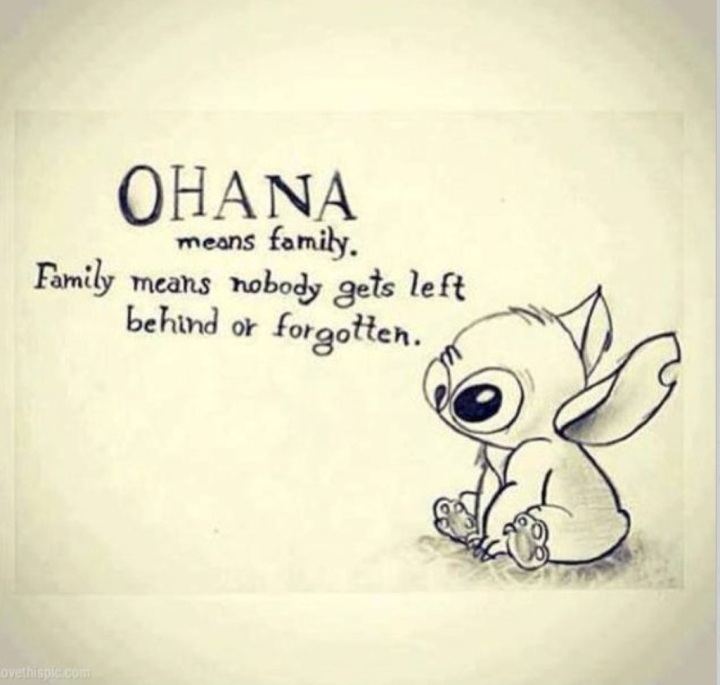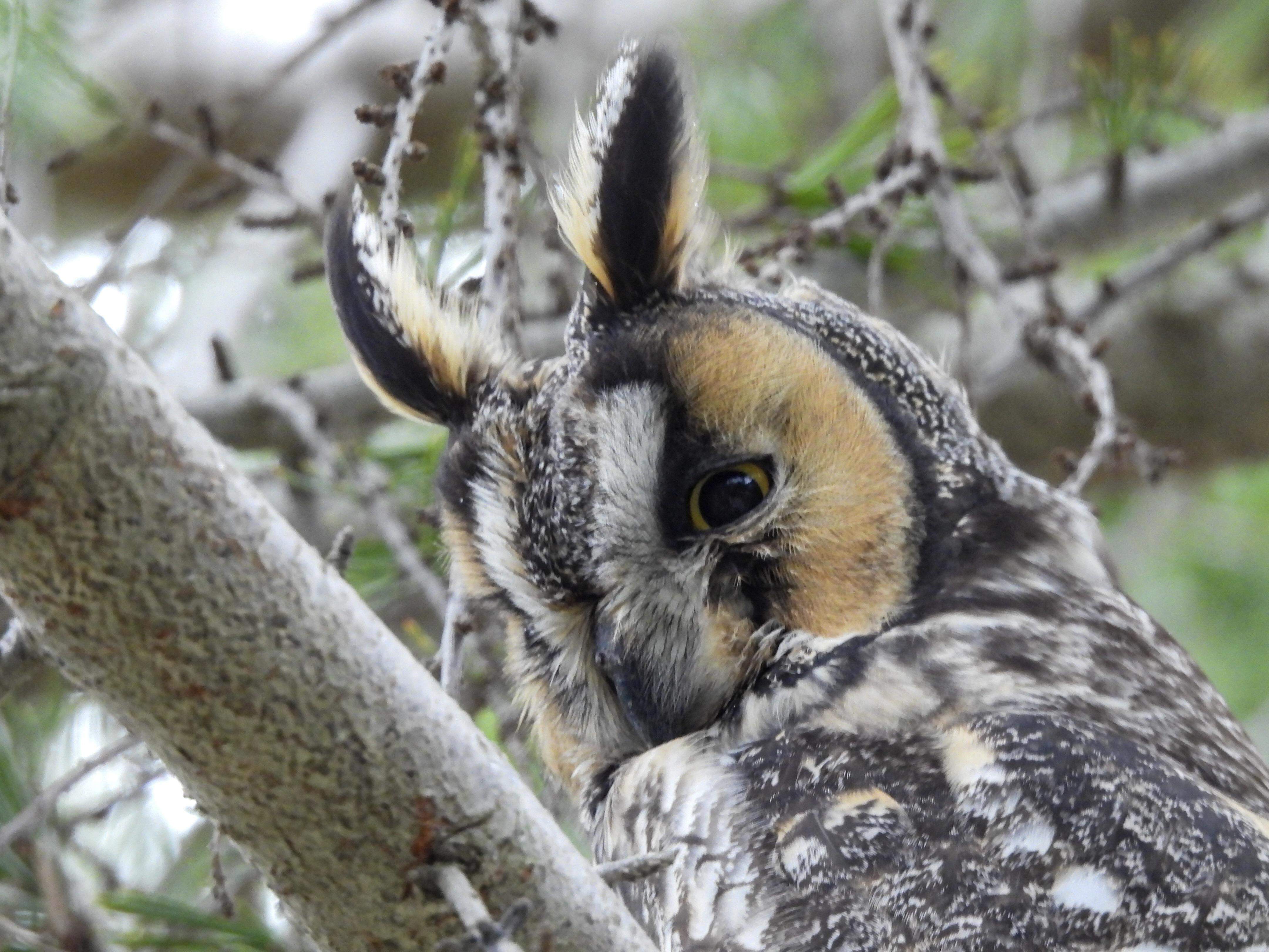This is dumb. Most plants resist cultivation. Bragging about being able to afford them does not make you Superior.
Also yields are important
Resist cultivation or have some other undesirable properties. Often low yield, short harvest, low yield, difficult picking or transporting.
A favorite example of mine: oak’s acorns are sometimes edible. Roughly one in ten oaks produce edible acorns. They are indistinguishable from inedible ones unless you try them out - but inedible ones are fairly poisonous. The gene for edible acorns is recessive and it takes at least a decade before you know if a newly planted oak produces edible acorns or not, with a 10% probability of the former. It is just practically impossible to select for this criterion. Thus, we don’t eat acorns.
You just remove the tannins by soaking them, it’s not really a major problem. I tried it before, they were fine but fairly bland.
Isn’t acorn flour edible after you rinse out the toxins? Some north american tribes did essentially “farm” acorns (They managed groves of oak) and iirc that’s how they dealt with the toxicity.
I thought we eat acorns after processing them? There are cuisines which involve acorns as main ingredient.
Not sure that acorns are inedible. They just need to be processed.
Also acorns ain’t particularly nutritious.
Often low yield, short harvest, low yield, difficult picking or transporting.
And let’s not forget, low yield.
I mean, I think that goes back to the whole “industrial farming” point. If it can’t be farmed, it won’t be commercially available. But there are plenty of plants that you could scavenge, if you knew what to look for.
One of my personal favorite niche plants is osha root. It’s one of the best cures for a sore throat. It tastes a little bit like dirty root beer, and it’ll numb your entire throat when you chew on it. Native Americans kept some around for medicine. You can even grind it up and smear it on shallow scrapes to numb the area. You can find it in teas like Throat Coat, which is a sort of secret weapon for performers and public speakers whenever they have a sore throat.
But it can’t be commercially farmed, because it exclusively grows in the Rocky Mountains where a specific type of fungus helps it thrive. It isn’t commercially viable to market to the masses like throat lozenges, (even though it is just as effective in reducing sore throats) because it has to be scavenged.
there are plenty of plants that you could scavenge
But what happens when “you” becomes a million people? A hundred million people? A billion people? Where I live, we can’t even have a nice field of flowers because a hundred Instagram models will trample and ruin it before spring is over. Scavenging and foraging literally cannot feed the 7 billion human mouths on this planet.
8 billion now.
If it can’t be farmed there cannot be enough for everyone, but it will be exclusive to a select few. How they are selected is irrelevant.
My point wasn’t that commercial farming is bad. With 8 billion people on the planet, it’s a necessity. My point was simply that scavenging to supplant your needs should be more encouraged, and the knowledge should be passed down.
Most people live in large cities where this is not feasible for everyone at once. Also transportation is expensive.
If you have a garden (I recommend far from the street to avoid pollution), some wild plants will grow in it. It’s good to know which ones you can eat and to be able to distinguish them from poisonnous ones. This way, weeding can become a sort of harvest.
Isn’t that what they meant by industrial agriculture preventing widespread use?
Lamb’s lettuce superiority! They don’t need cultivation, grow everywhere even if you don’t want them to grow, and they are quite edible, also delicious.
Our current style of industrialized agriculture isn’t viable long-term (meaning: millenia); too much damage to the ecosystem.
It’s the kind of farming you need in order to provide for the high density
rabbit hutchescities that are supposed to save the planetNo, obviously it is just the most profitable, which is the only thing that matters under capitalism. With better planning we could totally use sustainable farming techniques, and have comparable yields.
And I don’t know what you are on about with cities. Cities are the densest, and thus most efficient way of human settlement. Other forms of settlement are less dense, therefore require more land, therefore leave less land for agriculture (and result in higher transportation costs) which means agriculture has to have higher yield per unit of area.
Imagine thinking of population and living as efficiency first and not wellbeing.
City people are crazy lol.
Rabbit hutches are the most efficient way to keep rabbits. They piss and shit on themselves and on top of each other, live sad and miserable lives, and require synthetic food being directly delivered to them. Just like human cities :D
Also, the great thing about not living in a city is the fact you can grow your own food reducing the need for incredible amount of supporting land around you. I barely have to go to the grocery store or farmer’s market for my vegetables.
Cities are sadness and misery factories, and some of the most polluted places humans have ever managed to create.
Imagine thinking of population and living as efficiency first and not wellbeing.
Ultimately if we want for 8 billion people to survive on this planet, we have to be somewhat efficient. If you spread out all current human population to a typical rural density (100/km^2) you get 80E6 km^2, or about all habitable land mass on earth. This leaves no areas for anything but human settlement. What you are advocating for is an infinite sprawling suburbia with not even a national park in between, which just sounds like a hellscape.
This is not taking into account that this will require everyone to use transportation to get anywhere (rather than a well-planned city where all daily destinations are a 5-10 minute walk), and transportation at those scales won’t be efficient either - if we go with cars we get a network constantly jammed, insanely polluting highways, if we go with rail it would either take an insane amount of rail or the “last mile” would actually be 10 km with little to no infrastructure. In any case it would take an insane amount of time when you need to go somewhere uncommon, like a medical professional specializing in your rare disease, or a DnD hangout, or a scientific conference, whatever.
Other essential services will also be very inefficient like electricity (imagine just how much wiring we would need), or water supply and sewage (which requires piping and dedicated sewage treatment facilities), or emergency response (imagine the amount of deaths because we can’t staff enough emergency stations to cover all the sprawl).
I’m not just talking about efficiency in the capitalist sense of profit, I’m talking about the basic sense of the amount of resources required to keep humans alive. We simply will not be able to sustain everyone living in a rural-like setting with a modern quality of life (like access to modern medicine, electricity, running water and internet). There is not enough land and resources on this planet to live like that. The fact that you and other people can do that is because they are (indirectly) subsidized by the city folk, mostly so that there is someone to work all those out-of-town agriculture jobs.
Also, the great thing about not living in a city is the fact you can grow your own food reducing the need for incredible amount of supporting land around you.
If you grow your own vegetables, you’re using more land for your vegetables than if you bought them from someone else, because economies of scale make agriculture much more efficient. And in any case I grow some tomatoes and celery on my balcony, you can do that in a city too with proper planning.
Cities are sadness and misery factories, and some of the most polluted places humans have ever managed to create.
Have you ever been to a well-planned car-free (or at least less-car-infested) city? It can be a quiet cozy place with lots of communities forming, lots of green spaces, and access to nature within 10-15 minutes by train. The thing you hate about cities is probably not cities, it’s cars and car-centric planning with suburban sprawl (which is ironically what you seem to be advocating for).
I’ve also lived a big chunk of my life in the forest, and I wanna do that again because I like forests. But I won’t pretend it’s sustainable for all humans to live like that. This must be the last refuge for those who truly love nature and/or want to work agriculture, which is a very low percentage of the overall population.
I harvest stinging nettle to use as a spinach replacement
I’m going to try to make maple syrup from big leaf maples this year too!
I mostly eat spinach now for potassium, but I just looked it up and stinging needle has only 25% lower potassium content than spinach, so at least for my use case it seems like a fairly good substitute seeing as how well stinging needle grow.
How do they taste? Do they not, uh, sting with the little spikes?
I got then popping up all around.
If you cook them they stop stinging.
My mother makes pasta with them too, puts them in the dough.
I blanch them and then freeze them. So no stinging!
How to harvest, dry, and make tea with nettles:
https://slrpnk.net/comment/16978019
If you have arthritis or hayfever they’ve been shown to help with that. Science has confirmed the old wives tales traditional herbal remedy works for this one. Not as effectively as modern medicine of course but if it’s all you can afford, or whatever, then something is better than nothing.
if you crush them, or flatten them, they don’t sting.
You can make them into patties and fry them up, surprisingly good.
Eat your weeds… This is Common Purslane:

It grows mostly everywhere and is a huge source of Omega 3 fatty acids. It’s much better cooked in my opinion. Also it’s best to find them in a field and not by the roadside where it may be leeching up god knows what hydrocarbon adjacent type of poisons.
I pulled so many of these boogers out of the garden this summer
probably dont eat ones growing on the streets. dandelions are cultivated, its a regular in some asian dishes. just not the street weeds.
Why is there a crummy phone ad in your picture?
Samsung’s pre-installed camera apps do that by default, I believe, unless you spot it and go digging where to turn it off (which seems do differ between some models, if I recall correctly)
I recently found out you can eat nettles (the ones that sting you), and they actually taste nice.
lots of iron in them
Can make tea out of them aswell
Nettle and potato soup is delicious.
Gotta try that thx
Good source of potassium as well. Although you’d need to eat 1.25 kilo to reach 100% recommended daily intake.
is that 1.25kg raw or cooked down? because raw isn’t actually that much, it’d cook down to like 2 micrograms following the law of leafy greens
They make a nice tea.
Non-vegans when you let them know there’s more you can eat outside meat and dairy products
I can’t say I know anyone that loves on an entirely meat and dairy diet.
Even I eat potatoes sometimes.
I tried it for a couple of months. I felt great on it, but it got really fucking boring
I’ve heard before that people feel good on a carnivore diet at first, but then it flips into the negative pretty quickly as your body runs out of vitamins.
Wikipedia lists even more drastic long-term problems: https://en.wikipedia.org/wiki/Carnivore_diet#Health_concerns
It also raises levels of LDL cholesterol, which increases the risk of cardiovascular disease.
This is completely ignoring that there’s multiple varieties of LDL cholesterol, some of which are benign. And basic blood draws don’t differentiate them, you need more detailed blood tests.
They are also low in dietary fiber, possibly causing constipation.
Dietary fiber is not an essential nutrient. Not only that, when I went carnivore for 2 months, after the first week of acclimation I was more regular than I have ever been in my life.
A carnivore diet high in red meat increases the risks of colon cancer and gout.
The study referenced is an epidiological study based on surveys of people that were asked to recall what they’ve eaten for the past 30 years. This resulted in clearly erroneous data where average daily calory intake was wildly off from average human requirements.
And you’re not supposed to draw conclusions from epidemiological studies with results lower than a 100% risk increase (aka doubling risk). The result of this study was 18%.
At best, this study should have been used to propose a more focussed double-blind study on the subject. But they didn’t. The WHO should be ashamed for platforming this trash study as if it’s 6-sigma physics results
The high protein intake of a carnivore diet can lead to impaired kidney function
The amount of protein that you’d need to eat to make this a problem is far beyond what a normal human could eat in a day. You’d die from rabbit starvation before it’d get that far. This study is like the one rat study claiming that asperthame causes cancer, but they were giving the rats 1000x the dose a normal human would consume if you corrected for body weight.
basic blood draws don’t differentiate them, you need more detailed blood tests.
You can get pretty close with a standard lipid panel: the TG/HDL ratio < 2, is strongly correlated with insulin sensitivity and LDL being pattern A (the undamaged, good type).
And you’re not supposed to draw conclusions from epidemiological studies with results lower than a 100% risk increase (aka doubling risk). The result of this study was 18%.
Epidemiology cannot establish causation in any circumstance, but if the hazard ratio is > 4 (so 400% risk increase) then further studies/interventions are warranted. This is why epidemiology is more accurately called hypothesis generating. But yeah a 1.18 hazard ratio is such low noise it doesn’t warrant further study, only people with agendas try to use such a low noisy signal for political ends.
The WHO should be ashamed for platforming this trash study as if it’s 6-sigma physics results
!!!
None of the Wikipedia claims are based on reproducible science, at best the justification is weak epidemiology with weak hazard rations and not controlling for carbohydrate consumption.
There is no nutrient deficiencies on a carnivore eating pattern, with zero carbohydrates, the nutrition from fatty red meat is complete
Agreed. And I’m going to expand on your comment a bit.
A lot of people like to argue that you’re not getting enough vitamin C on a carnivore diet, but that’s not true. There’s some details that most people aren’t aware of.
Glucose and vitamin C have very similar molecular structures. So similar that most mammals are capable of synthesizing any vitamin C they need from glucose, which can in turn be synthesized from protein. A side effect from this similarity is that vitamin C and glucose are absorbed via the same pathways, so a diet that’s high in glucose will result in less vitamin C absorption due to crowding out those pathways.
Because of this, if you’re not consuming a lot of glucose, you don’t need to consume as much vitamin C because you’ll absorb a higher percent of it. Not only that, on a carnivore diet you’re avoiding some compounds like oxalic acid, which significantly reduces absorption of several vitamins and minerals, such as vitamin C, magnesium, potassium, etc. Oxalic acid is found in most leafy green vegetables.
Also, there’s small amounts of vitamin C (alongside every other necessary vitamin/mineral) in meat, particularly beef. Not a lot, but if you’re more efficient at absorbing it it ends up being enough.
Granted, I don’t personally recommend the carnivore diet because 1: it’s boring, 2: it’s expensive, and 3: you need to do more research than what I’ve stated here to avoid problems. But regardless, it is doable.
But if you want most of the upsides without as much hassle, I’d recommend just going keto. You get 90% of the benefits, you get more variety in your food, and you can even make it vegetarian or vegan if you want.
Great write-up, thank you for taking the time, I liked reading it
the carnivore diet because 1: it’s boring, 2: it’s expensive, and 3: you need to do more research than what I’ve stated here to avoid problems. But regardless, it is doable.
As somebody doing carnivore, I don’t think it’s boring.
When you remove all of the plants from your grocery shopping, I don’t even think it’s more expensive. It’s about the same price. You’re not buying all that other stuff.
As far as research goes, I would agree for getting started, it’s a really good idea to follow somebody’s program, especially around electrolytes for adaptation. But if you are eating red meat and no sugar, and electrolytes, I don’t think there’s any negative problems you need to avoid
You won’t go low on vitamins if your carnivore diet incorporates organ meat. Most people don’t want to do this however. Liver isn’t terribly popular, kidneys and other organs even less so.
Tbf, many are kinda disgusting to modern palettes. Lamb’s quarter sucks compared to stuff like spinach, kale, or collards. Pokeweed needs extensive preparation to make it safe. Wood sorrel, horseherb, and prickly pear grows where I currently live, but I haven’t tried them yet. My dog likes horseherb despite the little spines for some reason. My grandmother used to fry dandelions and plaintain which was pretty good.
For another example of a plant that just didn’t make it into modern society at scale, there are skirrets. Carrots, parsnips, and skirrets were related umbellifer plants with edible, nutritious roots, cultivated over the centuries as food. Carrots and parsnips were responsive to breeding for root size, and could produce comparatively huge roots, but skirrets never really did. Once the potato was brought over from the new world, the skirret fell out of favor.
I always find it interesting when comparing cuisine between cultures of stuff that exists in different places but only eaten in one (or a few) of them. Like ok, I get that if you’re not used to much seafood in general you maybe will eat some grilled salmon but you’re not gonna be eating the guts out of crabs or lobsters or whatever. But then there’s something like burdock root, which grows in the US, doesn’t have a strong taste, and is just like various other root vegetables we do eat (although not as sweet as something like a carrot). But the US doesn’t eat it while east Asia does.
How do you get dandelions to not taste like poison?
She made something like this: https://www.allrecipes.com/recipe/214172/fried-dandelions-appalachian-style/
Oh! I will get to taste appalachian cuisine (*_*) Thank you !
Oh, the flowers. The leaves are edible and even taste good aside from the bitterness
I hate to bring race and racism into this, but one reason why I laugh at many racists, especially European racists, is how they claim they love their own national culture but do jack shit to have ANYTHING to do with its pre-colonial cuisine. Take British cuisine for example. While obviously people in medieval England (even the richest people at the time) had far fewer options than most people in the UK today, but they still used many herbs and plants for seasonings that are only being rediscovered by reenactors in recent years, and they are actually quite good.
More than just culture, the dangers of over-reliance on a handful of crops and cultivars is also dangerous. The Irish potato famine happened in the 1840s due to Irish potato crops just being a few kinds instead of the hundreds of varieties that you would find in South America. The result of this is that a blight that would have had a negligible effect in South America absolutely devastated Ireland. More recently in the 20th century, we have a near complete destruction of the Gros Michel banana in the 1950s. When you go to your typical supermarket, the bananas you see there are more than likely going to be Cavendish Bananas, which were considered inferior to Gros Michel in the past, but due to disease rendering Gros Michel bananas commercially nonviable they were chosen because they were all we got…
and the same shit could happen at any time to the Cavendish banana, too.
I have to correct you on your terrible misunderstanding of the Irish Genocide. Your misinformation is almost certainly not your fault, as I was uncritically taught the same utter bullshit in my primary school curriculum in the USA. The Irish genocide that you refer to as using the colonizer’s term “Irish Potato Famine” had absolutely fuckall to do with potatoes or the Irish. The absent landlords in England extracted mandatory “tax” in the form of literally every food crop that the Irish
slavestenants grew. There was ALWAYS, literally at ALL POINTS IN TIME, enough food to feed the people of Ireland. The food was physically stolen with violence and exported to cover “rent” to English “landlords” that never set foot in the country. Potatoes were grown in an act of extreme desperation as they were not a crop that was consideredthefttax-worthy and therefore the Irish did their best to feed themselves.Think critically about it for like one second. Do you really believe that it was just a bunch of silly dumb Irishmen that only ever thought to grow literally a single crop for all of their food? In such a lush and nutrient rich area that is still famous for like a dozen high quality staples in different food groups? Or did you just get duped by racists that still spread their bullshit successfully?
I am aware that the Irish famine was very multi-faceted and was an act of genocide. But for the sake of this particular argument (diversity in crops) I did point out that much of the Irish potato crop was a mono-culture, and the British absolutely brought over the blight without any concern of what it might do.
The Irish genocide that you refer to as using the colonizer’s term “Irish Potato Famine” had absolutely fuckall to do with potatoes or the Irish.
But it has everything to do with potatoes (a particular blight that affected potato crops) and the Irish (the actual affected people of this genocide).
The social and political reasons for why the Irish ended up so dependent on a single crop for sustenance is part of the story, of course, but this discussion right here is about the fragility and brittleness of relying on a single crop.
But they were growing other successful crops. The English just stole it all from them.
You’re just listing reasons why they were reliant on a single crop for sustenance. Cool, but the actual historical example shows why that particular arrangement is brittle and vulnerable to shocks, which is the point being made here.
No, that is just a narrative you are pushing in order to distract from the point being made here, which is that it was an intentionally constructed genocide. Can you define in general terms what you mean in this context when you say “that particular arrangement” that is “vulnerable to shocks”? Do you mean the arrangement of genocidal theft of produced crops? Of course thats a brittle agricultural system. That was the point.
I understand where your anger is coming from but it’s misplaced. Lots of people, Americans too, learn the Irish genocide as “the Irish Potato Famine”. Secondly, single crop use is ONE factor that made the situation worse in the context of anti-Irish policies by the occupying British.
The simple fact of the matter is that there was enough food to feed every Irish mouth, and even available aid from other places. Anyone starving was a matter of policy.
Extinct!
I heard recently that Gros Michel can be ordered online for an arm and a leg. I’ve always wanted to try it.
They are still available,but can no longer be grown to the same scale. If you try one, tell me, I am curious as to how they taste.
There’s so much hogweed all over the UK that’s just sitting there, uneaten. Not the giant stuff, that’s not a fun time. But the regular stuff has good flavour
Also tons of wild garlic when the seasons in
To clarify, when knowone says “that’s not a fun time” they don’t mean “oh it tastes bad”. They mean it’s really not a fun time, avoid going anywhere near giant hogweed!
https://en.wikipedia.org/wiki/Heracleum_mantegazzianum
NSFL (if you’re squeemish):
Thanks for clarifying for me. Yeah I should’ve maybe given a clear do NOT go picking hogweed to eat, or even that near it, unless you’re absolutely sure you can identify one from the other. Despite it’s name, giant hogweed is very often just as large as the common hogweed surrounding it. It still needs to grow to that size, after all
Apiaceae are generally very hard to tell apart. Sure, the common hogweed is relatively easy to ID if you know the plant well enough. But there are sooo many species in this family that all have small white flowers and similar looking leaves…
Hey, there’s some of that in my garden!
It’s growing right next to some giant hogweed though.
giant hogweed, water hemlock
Dewberries are so fucking delicious. I used to go pick them and make dewberry pie as a kid. God I miss that, they don’t grow where I live rn 😔
there are some other problems too. I would love to scavenge or grow things here, but the town I live in is basically built on a gigantic industrial waste dump, so eating anything out of the ground here is a bad idea.
That’s what the government says. But I know the truth - I know it’s the queers! They are in it with the aliens to build landing strips for GAY MARTIANS! I swear to god!
I like you Stewart, you’re not like the other people. Here in the trailer park.
For Polish speakers theres this book by prof. Łuczaj: https://lukaszluczaj.pl/dzikie-rosliny-jadalne-polski-pelny-tekst/ - every plant that grows in our region and can be eaten. In some more edgy cases backed by his own experimentation on himself.
Does he also document the fuckable plants? I’m asking for a friend
Oh boy are you in for a surprise…

There’s his “Sex in the great (grand?) forrest”. Its about best plants to fuck on (or under). Mostly. As side notes it does point out some local plants in particularly interesting shapes, or some one might rub themself against… This guy is commited. And also an actual true professor on an actual university.
Wow, you did not disappoint.
Just happened to have it… because of reasons.
Transportability is a huge consideration. Pawpaws can’t be transported nationally, for example. The plants we eat have been bred for maximum marketability, which includes getting the produce from where it grows to where people need it.
So… cool story
Ann Reardon from How to Cook That, took Coke, and tested it for HFCS, it of course indicated it was in there, then she took a Mexican Coke, and it also indicated, but it claims not to use it.
Apparently, the acid in the Coke breaks down the sucrose in the cane sugar, making the product very close to the HFCS variant. She followed up with a blind taste test (very limited size, just her family) and found they were very close in flavor.
It would appear that we do to some decent extent enjoy HFCS.
Have you seen the size of the average American?
Who is ignoring that we don’t like HFCS? It’s downright an addictive substance.
I think if you ask 100 Americans, they will overwhelmingly be down on HFCS.
I don’t think I’ve ever heard anyone that’s tried coke with cane sugar and doesn’t say that it’s better than regular cook.
Everybody I know that drinks Coke thinks that Mexican Coke is superior, but is hard to get in a lot more expensive.
There’s a pretty significant campaign against it.
She’s either from Australia or Aotearoa. I don’t expect their coca cola to be the same recipe as in the US.
could be,
she was basing it on the ingredients list and she had the mexican coke shipped.
This is a very timely meme for me. Specifically because today, after many years of trial and error, I have finally managed to successfully cook Phaseolus polystachios beans!
Mine are natirally very bitter and tough, not sure how widely that varies from specimen to specimen. Also presumably chock full of toxins/anti-nutrients… I’ve been taking the bitterness as an analogue for how much of that remains, for lack of any other other way to tell.
Today, for the first time, I’ve managed to make them tender and not bitter at all. They taste pretty good!
Although RFKjr has some crazy ideas, not adding food colouring to the balanced diet pyramid is not one of them, and one that any other GOP fascist loyalist, given the job, would gladly do it if given a dollar for it. Energy secretary as an example is full oligarchist energy protectionism.


















